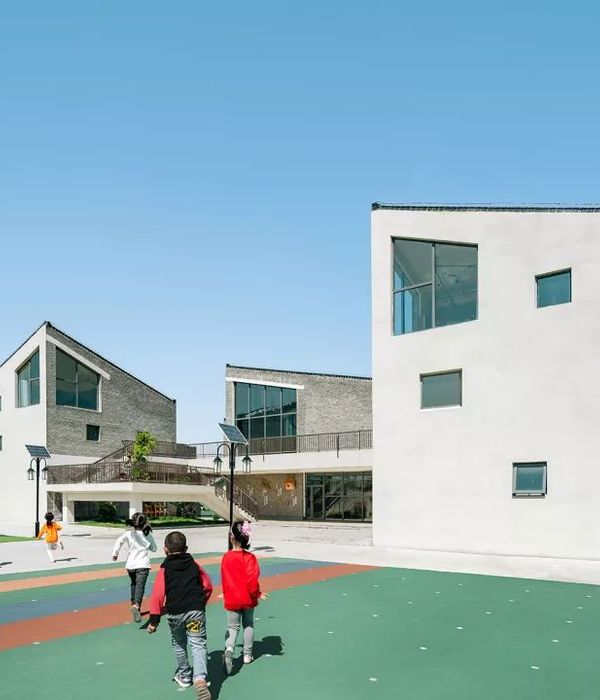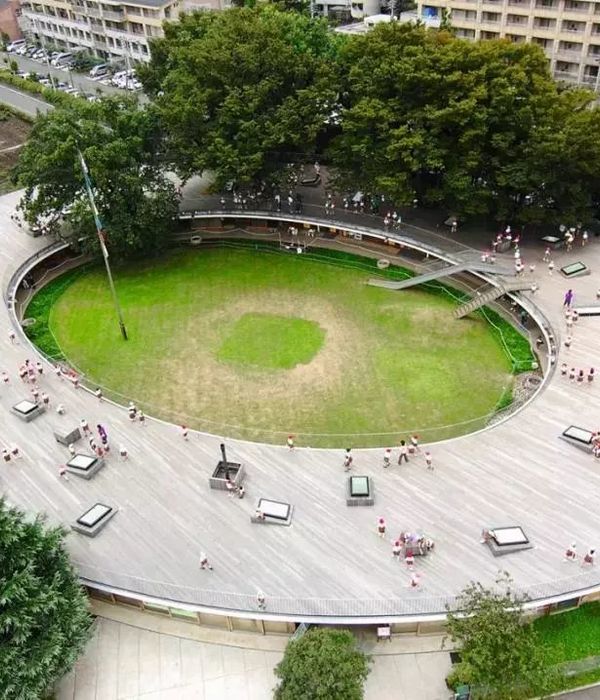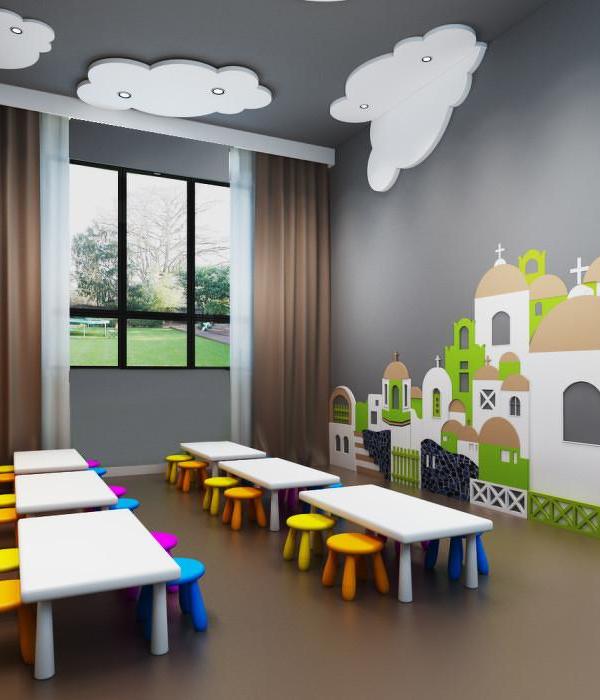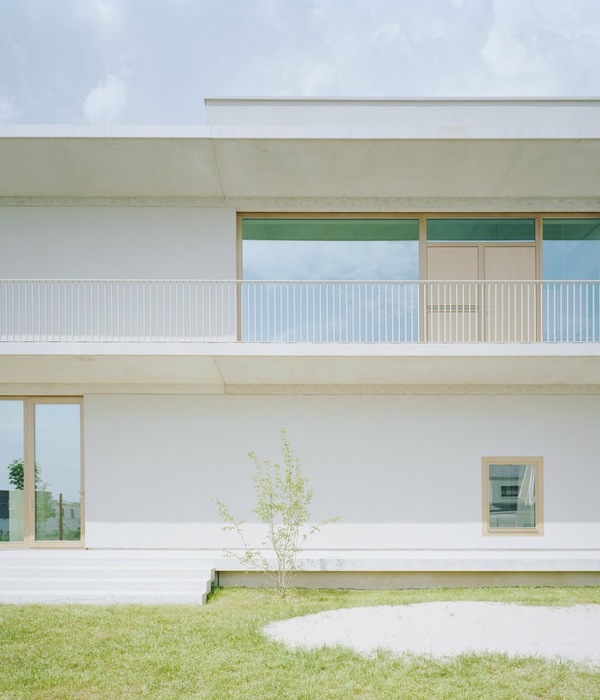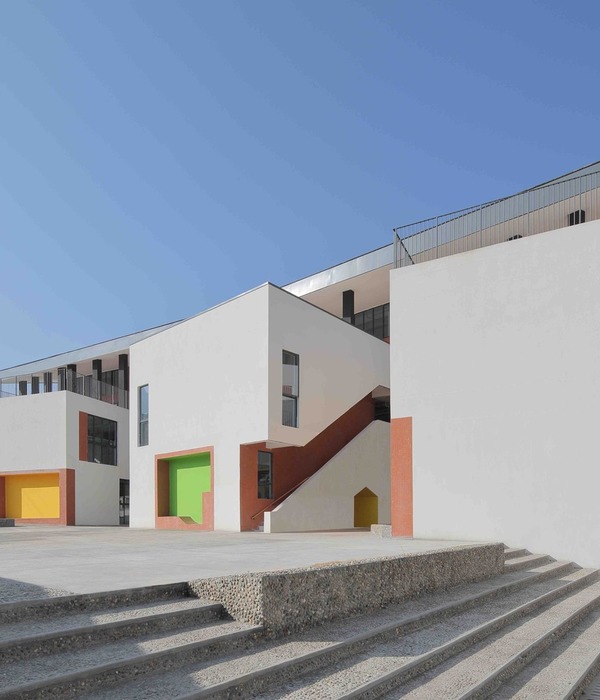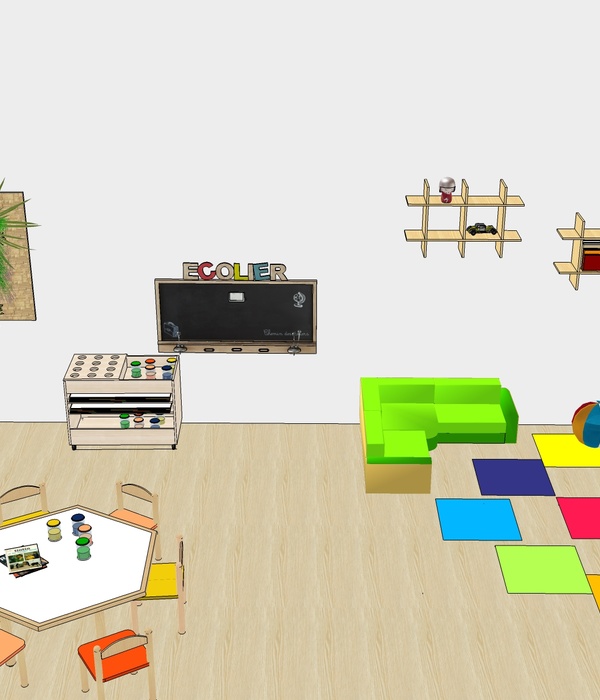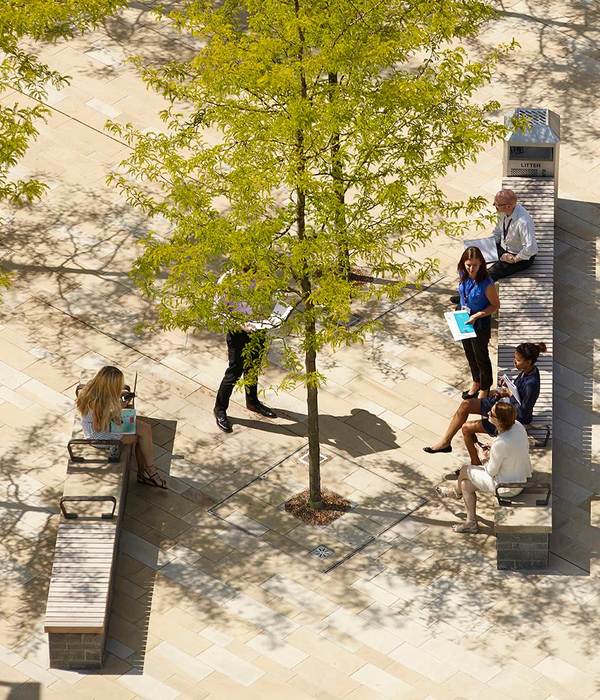该项目位于大阪府北部的绿化优良的茨城市,是该市智慧社区项目的核心工程。茨城智慧社区项目占据185000平方米,场地前身是东芝集团的工厂。该项目占地40000平方米,将作为新的园区服务与追手门学院大学约3600名学生,学生数量占大学学生总数的一半。
随着互联网技术的发展,人工智能和移动通讯技术不断提高,学生不再需要去到学校上课,未来的大学将采取怎样的形式?在此环境下,建筑师的任务是思考如何设计出好的学习场所,激发学生前往校园。长久以来,日本的神社和庙宇一直因其神秘感而极具吸引力。来自日本各地的朝圣者,总是能将神社所在地变成繁华的集会。这个概念使设计团队对未来的学习空间有了设想。
▼项目鸟瞰,bird view ©Shinkenchiku-sha
▼学习方舟建筑外观,exterior view of the academic ark ©Shinkenchiku-sha
Located in the leafy city of Ibaraki in northern Osaka Prefecture, this project forms the core of the Ibaraki Smart Community, which occupies the 185,000 m2 site of a former Toshiba factory. The 40,000 m2 facility will serve as a new campus for about 3,600 students at Otemon Gakuin University, or about half the student population.
As Internet technology, artificial intelligence, and mobility improve and students no longer need to be on campus to attend school, what form will universities take? Our task as architects was to think about how to design a learning site that would inspire students to make that trip to campus. Since ancient times, Japan’s shrines and temples have held a mystery and attraction that has drawn pilgrims from all corners of the country, turning these sites into lively gathering places. This concept informed our image of the learning spaces of the future.
▼学习方舟一侧的附属咖啡厅,cafeteria near the academic ark ©NaoomiKurozumi
▼咖啡厅立面,elevation of the cafeteria ©Shinkenchiku-sha
为了吸引人群集中于一个区域活动,设计团队将项目的各项功能整合进一栋建筑内。设计团队的目标是构建一个综合性场所,为各种各样的使用者提供交流灵感,探索未知或休闲娱乐的好去处。设计团队将建筑设计为三角形布局,这有利于营造出建筑中重要的集散空间。建筑的每个角都向内倾斜,构建出引人入胜的入口空间。
In order to attract people and concentrate activity in one area, we layered functions inside a single building. Our aim was to create a complex that welcomes diverse individuals, stimulates interest, invites exploration, and provides a place to spend time. We selected a triangular footprint as the most efficient shape for centralizing the excitement and energy of academic activity in a single space, and angled each corner of the building steeply inward to create inviting “gates” to enter through.
▼三角形的角向内倾斜,each corner of the building steeply inward ©Shinkenchiku-sha
▼引入入胜的独特入口,unique inviting “gates” ©Hisao Suzuki
这栋建筑被命名为学术方舟。游客进入大厅,即会被悬浮的巨大银色体块所吸引,该体块中包含有藏满书籍的图书馆。一条“书本走廊”环绕起图图书馆。图书馆四周,设有6个大教室分布于二楼及三楼,21个小教室分布于四楼和五楼。图书馆与小径之间空隙较大,使得各楼层之间的视线相互贯通,更有利于打造学习空间的氛围。
▼大厅中悬浮的巨大银色体块,massive, floating silver volume in the main hall ©Naoomi Kurozumi
▼体块下成为重要的集会空间,important meeting space under the massive volume ©Naoomi Kurozumi
▼书本走廊与图书馆间隙较大,使楼层之间视野互相通透, a large void between the library and the book trail allows for visibility between floors ©Naoomi Kurozumi
Inside this Academic Ark, as we named the building, visitors are greeted by a massive, floating silver volume in the main hall. The volume contains a library packed with those treasures of the learning space, books. A “book trail” encircles this centripetal space, flanked by six large classrooms on both the second and third floors and twenty-one small classrooms on the fourth and fifth floors. A large void between the library and the book trail allows for visibility between floors, making apparent the energy created by a learning site where individuals both see and are seen by each other.
▼通向图书馆的廊道,corridor towards library ©Naoomi Kurozumi
▼图书馆内部,台阶可用作演讲台,library Interior, the staircase can also be used as the stages for presentations ©Naoomi Kurozumi
▼图书馆四周的休息室,Professors Lounge in the Library ©Shinkenchiku-sha
以环境友好的可持续设计理念出发,建筑外墙选用了括铸有樱花衍生图案的不锈钢栅格。樱花是该校的校花,这样的设计既能体现出学校的特色,又能在夏季减少60%的环境负荷。建筑五层设有三角形的屋顶花园,周围环绕着带有宽大顶棚的廊道式露台。露台的设置一方面减少了从屋顶进入建筑的热能,另一方面为学生提供休闲的空间,让学生在学习之余能享受屋顶的微风。
▼三角形角落处的学习室,外面可以看到环保不锈钢栅格,“STUDIO” at the Triangle Vertex. Stainless steel eco-screen can be seen outside ©Naoomi Kurozumi
▼括铸有樱花衍生图案的不锈钢栅格,cast stainless steel screen façade featuring a motif of cherry blossoms ©Naoomi Kurozumi
Environmentally sustainable design elements include a cast stainless steel screen façade featuring a motif of cherry blossoms, the university flower, which both expresses the school’s identity and reduces the environmental load by sixty percent in summer. The rooftop garden on the fifth floor and the triangular corridor-like terrace covered by large eaves that encircles the garden reduce heat entering the building from the roof as well as provide a place for students to enjoy the gentle breezes as they relax or study.
▼屋顶花园及檐下的廊道,roof garden and corridor under eaves ©Naoomi Kurozumi
该学术方舟所处的校园有着公园般的景色,可供智慧社区内的居民免费使用。设计团队希望这座大楼能够吸引到更多学生前来学习,帮助他们在这个互联网时代够体验到与老师,与朋友,乃至与整个社会的亲密关系。
This Academic Ark sits within a park-like campus that can be freely utilized by residents of the Smart City. It is our hope that the building will become a new space for learning that students actively seek out in order to experience connections with teachers, friends, and society at large even in this Internet age.
▼大型学习空间,large studio for active learning ©Shinkenchiku-sha
▼咖啡厅及餐厅,cafeteria and dinning hall ©Naoomi Kurozumi
▼夜晚的建筑,building at night ©Yamagiwa
▼场地平面,site plan ©Mitsubishi Jisho Sekkei
▼建筑平面及剖面,plan and section ©Mitsubishi Jisho Sekkei
Credit Information
Architecture : Mitsubishi Jisho Sekkei Inc.
Structural Engineer : Mitsubishi Jisho Sekkei Inc.
Environmental+Mechanical Engineer : Mitsubishi Jisho Sekkei Inc,
Lighting Design: akari+DESIGN associates
Textile Design|Yoko Ando Deign
Construction Supervision: Mitsubishi Jisho Sekkei Inc.
Art Coordination: Mitsubishi Jisho Sekkei Inc.
Project Management: Mitsubishi Jisho Sekkei Inc.
Project Outline
Location : Ibaraki-City, Osaka Japan
Date of Completion : March 2019
Date of Opening: April 2019
Principal Use : School, Library,Cultural Hall, Studio,Cafeteria
Structure : S+SRC
Site Area : 64,415 m2
Building Area : 6,752 m2
Total Floor Area : 20,409m2
{{item.text_origin}}

